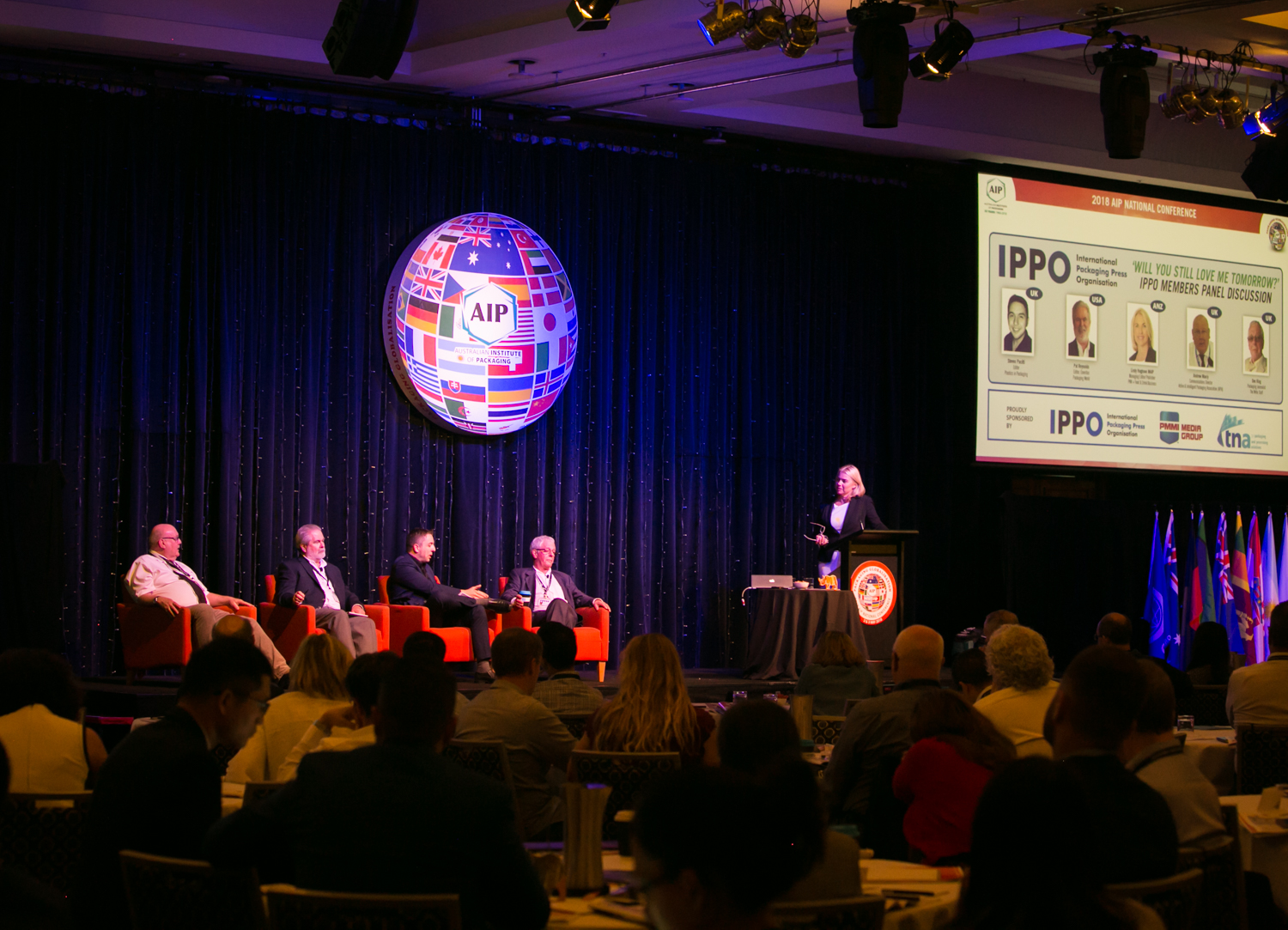AIP 2018: Creative problem-solving with global media
Written by Alison Leader
The resounding sentiment at the conference was that the industry needed a stronger voice to stem the tide of negativity about packaging.
Members of the International Packaging Press Organisation (IPPO), a professional global group of editors, journalists and writers who cover packaging and the packaging industry, were among those who flew over to network at the two-day conference on the Gold Coast – and some took to the stage to share trends insights and opinions about where the industry is headed.
Journalist Des King (below) shared his thoughts on the “outrage” currently expressed in the UK about plastics packaging.
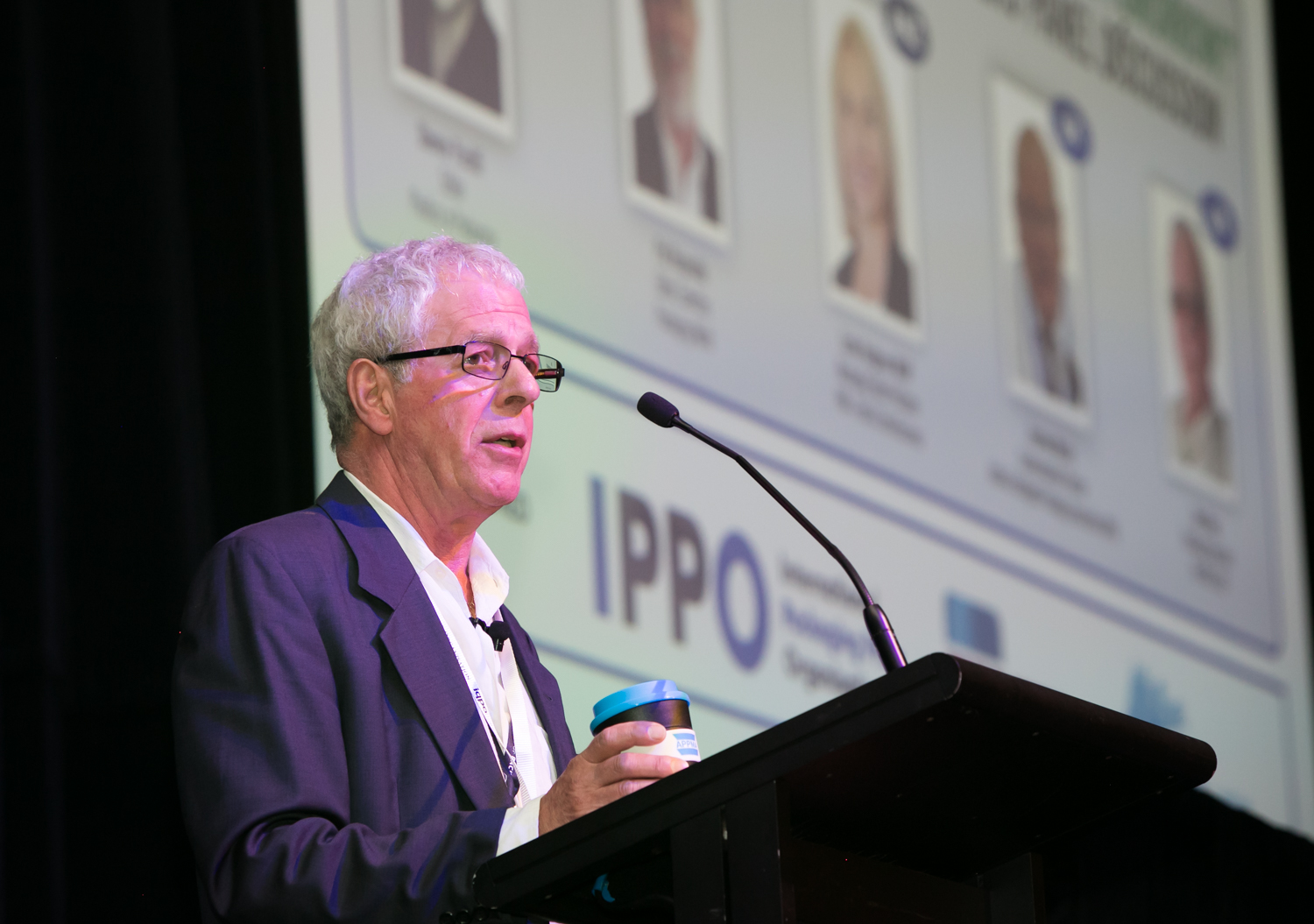
“It’s difficult for me to think of any other facet of everyday life that has been so demonised so quickly, and which is so easy to love to hate,” he said.
“It’s an emotional mindset. We [consumers] like to be frightened every day by something new. And we are frightened of packaging.
“Given the horrified reaction to David Attenborough’s Blue Planet footage, it is clear that protecting packaging’s finer feelings has never been on the agenda – but who will voice the counter argument to fashion a defence no one is interested in hearing?
“Packaging and the consumer need more than a one-night stand.
“If we want packaging to be better valued by customers, it’s up to us to be doing something about it – not relying on the rest of the supply chain to do the explaining for us.”
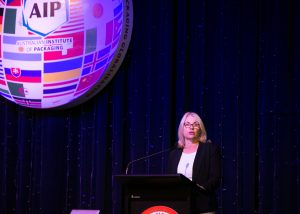 A panel featuring the four communications experts was also chaired by PKN Packaging News publisher Lindy Hughson (right) and covered issues such as educating consumers about technology that extends shelf life and the outrage over packaging waste compared to food waste.
A panel featuring the four communications experts was also chaired by PKN Packaging News publisher Lindy Hughson (right) and covered issues such as educating consumers about technology that extends shelf life and the outrage over packaging waste compared to food waste.
Why aren’t we funding a TV program to tell the consumer about the complete process from farm to plate, and including details of packaging? Packaging voices are under-represented.” – Steven Pacitti.
IPPO president and editor of the UK’s Plastics in Packaging, Steven Pacitti (below), humorously covered a host of interesting plastics and packaging trends as part of his talk, entitled The Plastics Files: The Truth is Out There.
 Pacitti talked about the study claiming the presence of microplastics in bottled water, which was, in his view, dubious – as microplastics are also found in air, beer, and cheese.
Pacitti talked about the study claiming the presence of microplastics in bottled water, which was, in his view, dubious – as microplastics are also found in air, beer, and cheese.
He also spoke about the need for the packaging industry to share “the great work” done in lightweighting and compostability.
“We need to make sure sceptics hear our stories, and for brands to advertise their sustainability credentials,” he said.
“Why aren’t we educating consumers about things like packaging made from sugar cane?”
Pacitti listed some of the goals and targets of big brands seeking to reduce their environmental impact – many of them by 2025.
He also discussed innovation in packaging such as the CFLEX pouch, which can can be recycled into film; transparent pouches; genuine coconuts with straws and the brand name printed on the outside; plastic packaging which can feed marine life; dissolvable pouches for oatmeal or coffee; and edible wrappers.
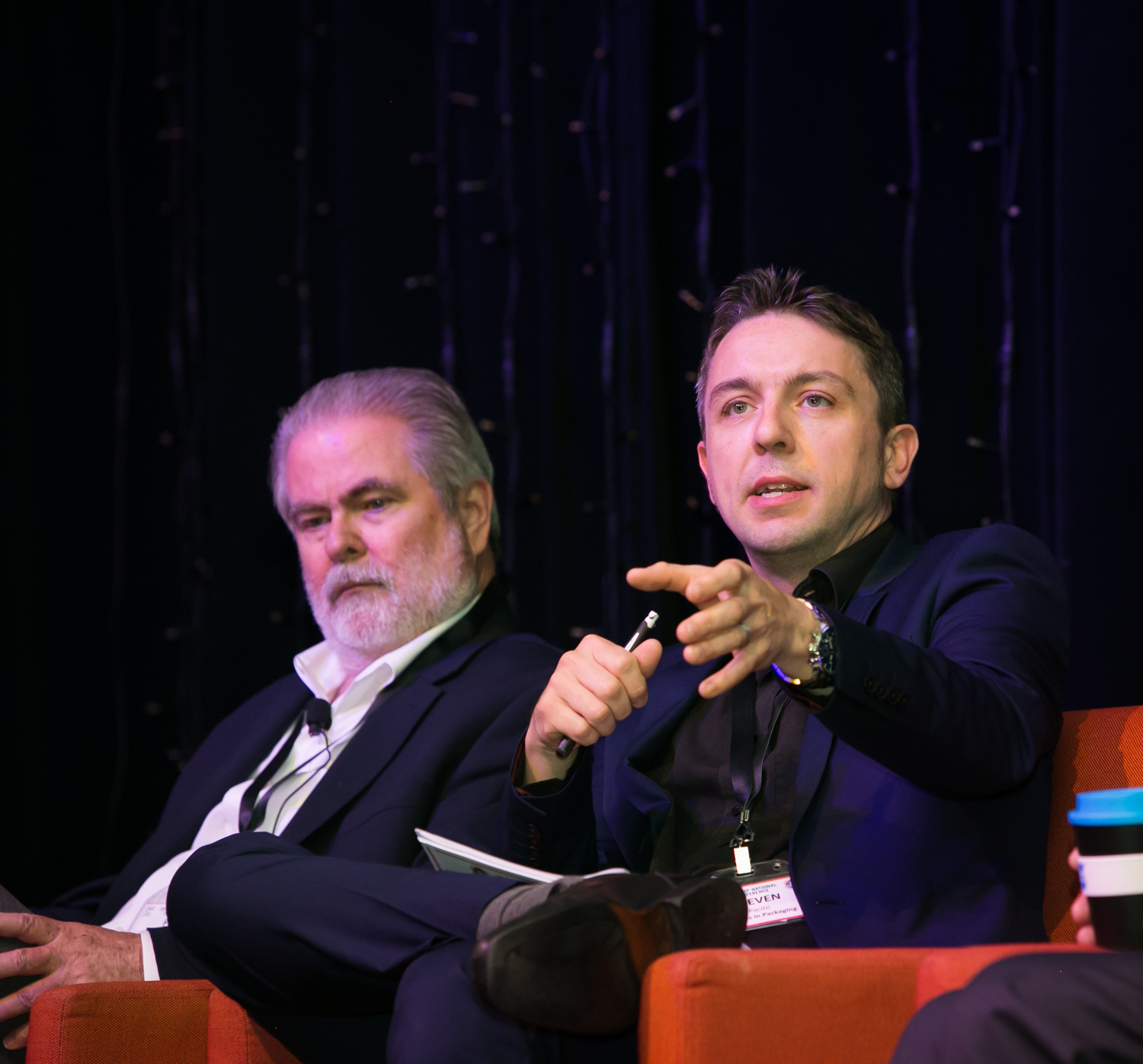
Innovation, now
In his talk, Packaging World Editor Emeritus Pat Reynolds spoke about the importance of innovation in light of today’s “convenience-crazy” consumers.
“Companies need to innovate or risk failing,” he said.
Reynolds also pointed to trends in lightweighting, new materials, improving recyclability, smart packaging, and cobots as highly influential in brand development in 2018.
It’s an emotional mindset. We like to be frightened every day by something new, and we are frightened by packaging.” – Des King.
He pointed to a reusable bottle which provides four beverages in one bottle, a twist-to-brew beverage with ingredients in the cap, as well as PepsiCo pods which house dry and liquid ingredients separately within the bottle.
“Millennials want to order online and they want their products to be experiential,” he said.
“They want to do their part when they open it.”
Reynolds also touched on innovations in paper, such as the Automato E-flute corrugated dispenser for tomatoes; the IntegraFlex collapsible cup for oatmeal and cereal; and talking bottles from KHS.
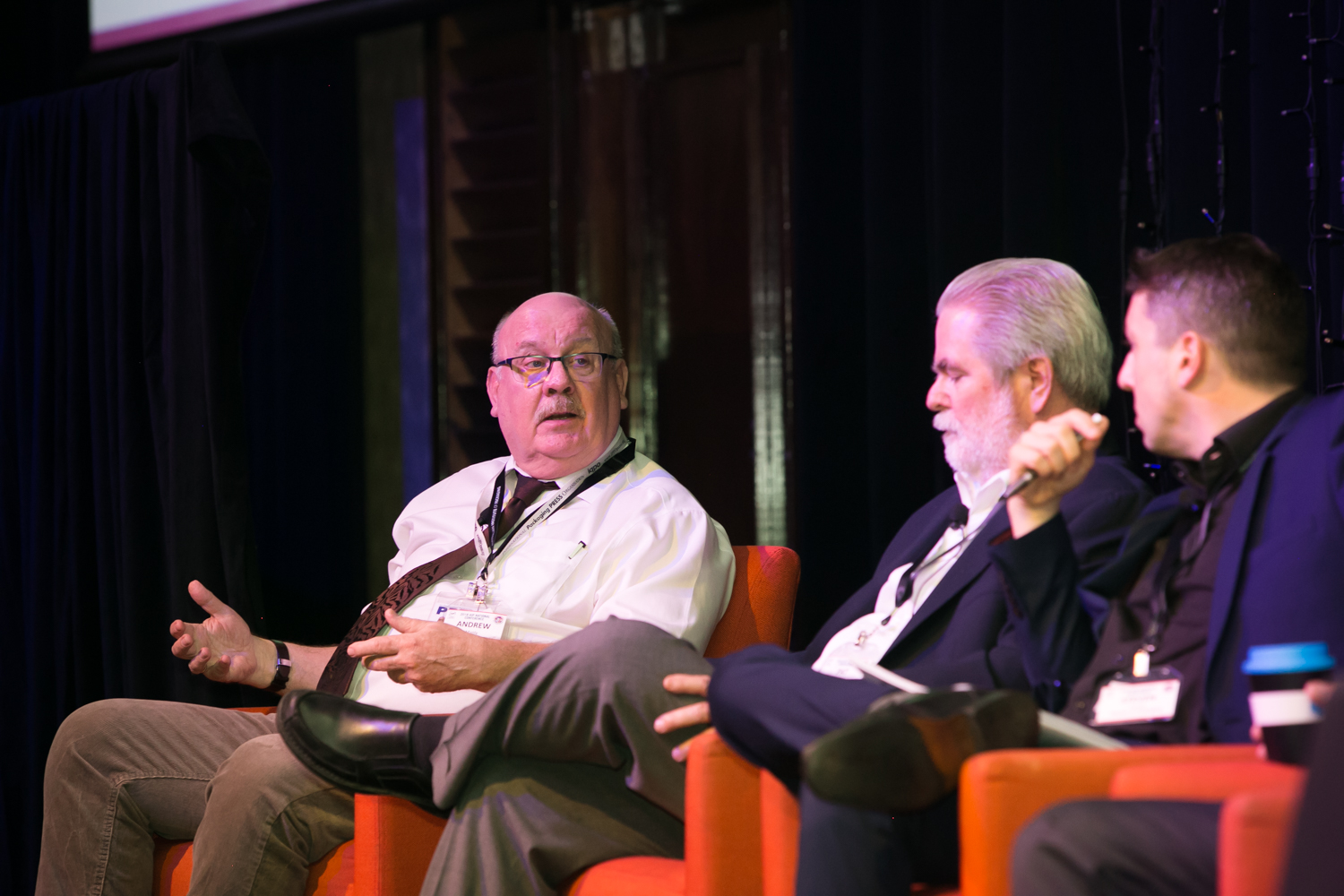
Also on the line-up was Active & Intelligent Packaging Association (AIPIA) communications director Andrew Manly (above), who spoke about intelligent packaging as “a force for good” which can help brands increase security, improve supply chain management, and differentiate on-shelf.
“Packaging is not an evil to be tolerated,” Manly said.
“It can be fun on a number of levels.”
